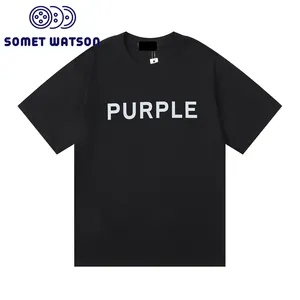Phổ biến trong ngành của bạn

ATECH PL332 Cảm Biến Mức Nhiên Liệu GPS Cho Hệ Thống Giám Sát Bể Xe
20,00 US$ - 69,00 US$
Đơn hàng tối thiểu: 1 Cái


Tất cả các loại ngành công nghiệp nước xe tăng mức chất lỏng màn hình cảm biến Meter Transmitter nhà máy giá
50,00 US$ - 105,00 US$
Đơn hàng tối thiểu: 1 Cái
Vận chuyển mỗi chiếc: 34,63 US$


Nước ngầm chất lỏng sông giếng giếng khoan kiểm soát mức độ Tank Detector chỉ số cảm biến
75,00 US$ - 99,00 US$
Đơn hàng tối thiểu: 1 Cái
Vận chuyển mỗi chiếc: 62,18 US$


RS485 modbus Radar nước mức chất lỏng Transmitter dầu diesel Xăng nhiên liệu đo mức độ cảm biến
135,00 US$ - 180,00 US$
Đơn hàng tối thiểu: 1 Cái
Vận chuyển mỗi chiếc: 72,21 US$


Wnk 4G Không Dây Thông Minh Mực Nước Cảm Biến Tank Giám Sát Không Dây
90,00 US$ - 150,00 US$
Đơn hàng tối thiểu: 1 Bộ
Vận chuyển mỗi chiếc: 30,00 US$


Chìm 0.6 M Bình Nhiên Liệu Cảm Biến Mức Hệ Thống Giám Sát Đối Với Arduino
Sẵn sàng vận chuyển
72,57 US$ - 84,86 US$
Đơn hàng tối thiểu: 1 Cái
Vận chuyển mỗi chiếc: 18,89 US$

Tank track tank l704 diesel submersible pressure level monitor level sensor fuel management system
58,00 US$ - 67,00 US$
Đơn hàng tối thiểu: 1 Cái
Vận chuyển mỗi chiếc: 77,86 US$

Fuel tank monitoring system automatic tank gauging atg diesel level sensor float board magnetic level gauge
199,00 US$ - 599,00 US$
Đơn hàng tối thiểu: 1 Cái

Thiết Bị Trạm Xăng Thiết Bị Đo Bồn Tự Động Hệ Thống Giám Sát Mức Nhiên Liệu Để Bán
50,00 US$ - 1.500,00 US$
Đơn hàng tối thiểu: 1 Bộ


Mức Độ Chuyển Đổi Dò Thông Minh Nước Mức Độ Tank Hệ Thống Giám Sát
Sẵn sàng vận chuyển
13,00 US$ - 18,00 US$
Đơn hàng tối thiểu: 2 Cái
Vận chuyển mỗi chiếc: 18,66 US$

64 kênh cảm biến không dây không dây nước tăng mức độ màn hình thông minh hệ thống báo động
50,00 US$ - 100,00 US$
Đơn hàng tối thiểu: 1 Bộ
Các tìm kiếm liên quan:
hệ thống cấp độ tự độnghệ thống giám sát mực nướcgiám sát mức bể dieselgiám sát mức bể không dâygiám sát mức bình nhiên liệu không dâyhệ thống giám sát mức bình nhiên liệugiám sát mực nước bểgiám sát mức bể từ xagiám sát mức chất lỏnghệ thống giám sát mực nướcthiết bị giám sát mực nướcgiám sát mức bình nhiên liệu dieselhệ thống giám sát mứcgiám sát mực nướcgiám sát mức độ

Sewage tank level sensor HOLYKELL wastewater monitoring systems hpt605 submersible 4 20ma
115,00 US$ - 169,00 US$
Đơn hàng tối thiểu: 1 Cái
Vận chuyển mỗi chiếc: 62,19 US$

Eaglestar diesel fuel tank level gauge fuel monitoring system on mobile app pc measure the oil level water level temperature for the petrol tanks
530,00 US$ - 630,00 US$
Đơn hàng tối thiểu: 1 Bộ

Không Dây Wifi 2G 3G 4G Có Thể Chọn Hệ Thống Giám Sát Bể Nước Từ Xa
Sẵn sàng vận chuyển
25,00 US$ - 35,00 US$
Đơn hàng tối thiểu: 5 Cái
Vận chuyển mỗi chiếc: 3,94 US$

Hầu Hết Các Hệ Thống Đáng Tin Cậy Và Tiên Tiến Hệ Thống Giám Sát Bể Không Dây Đo Mức Siêu Âm Để Đo Mức Chất Lỏng
Sẵn sàng vận chuyển
75,00 US$ - 99,00 US$
Đơn hàng tối thiểu: 1 Bộ
Vận chuyển mỗi chiếc: 26,37 US$

Bluesky Tuya Hệ Thống Giám Sát Mức Bình Xăng Hệ Thống Đo Mức Nhiên Liệu Cho Bình Dầu
700,00 US$ - 1.000,00 US$
Đơn hàng tối thiểu: 1 Cái

Chất lượng cao lorawan thông minh nước lỏng cảm biến mức siêu âm không tiếp xúc mực nước cảm biến bình nhiên liệu hệ thống giám sát
Sẵn sàng vận chuyển
101,00 US$ - 136,00 US$
Đơn hàng tối thiểu: 1 Cái
Vận chuyển mỗi chiếc: 18,89 US$

Hệ Thống Quản Lý Kiểm Kê Nhiên Liệu Rễ Veeder, Hệ Thống Giám Sát Mức Bình Nhiên Liệu
900,00 US$ - 1.500,00 US$
Đơn hàng tối thiểu: 1 Cái

BOQU BQ-ULM Thiết Bị Cảm Biến Giám Sát Mực Nước Siêu Âm Chất Lỏng Bán Chạy Hệ Thống Giám Sát Mực Nước
119,00 US$ - 199,00 US$
Đơn hàng tối thiểu: 1 Cái

VACORDA Cảm Biến Mực Nước Zigbee Không Dây Hệ Thống Giám Sát Mực Nước Cảm Biến Siêu Âm
158,00 US$
Đơn hàng tối thiểu: 2 Cái
Vận chuyển mỗi chiếc: 48,11 US$

Hệ Thống Giám Sát Mức Nước Thông Minh DYP-A08, Cảm Biến Siêu Âm Chống Nước 8M Rs485
Sẵn sàng vận chuyển
50,00 US$ - 60,00 US$
Đơn hàng tối thiểu: 5 Đơn vị
Vận chuyển mỗi chiếc: 5,55 US$

Mức độ đo hệ thống tự động nhiên liệu Tank mức độ đo cụ dầu mức độ hệ thống giám sát cho tàu
1.480,00 US$ - 1.800,00 US$
Đơn hàng tối thiểu: 1 Cái

Veeder gốc tls4b mức độ tự động Tank Gauge giao diện điều khiển có thể giám sát 6 bồn chứa dầu trạm xăng mức chất lỏng hệ thống giám sát
1.300,00 US$ - 2.450,00 US$
Đơn hàng tối thiểu: 1 Cái

AOSHENG OEM chất lượng cao Tự động mức độ cụ bình nhiên liệu cảm biến mức nhiên liệu hệ thống giám sát
60,00 US$ - 80,00 US$
Đơn hàng tối thiểu: 5 Cái

Strongfirst nước thải giám sát Hệ thống hpt605 chìm 4-20mA nước thải Tank mức độ cảm biến dụng cụ đo lường
129,00 US$ - 179,00 US$
Đơn hàng tối thiểu: 1 Cái

Siêu âm cảm biến mức siêu âm nhiên liệu cảm biến nhiên liệu Tank hệ thống giám sát với 4 gam GPS cho RS232 RS485
89,00 US$ - 98,00 US$
Đơn hàng tối thiểu: 1 Bộ
Vận chuyển mỗi chiếc: 18,89 US$

Hệ Thống Giám Sát Đo Lường Cảm Biến Mực Nước Không Dây Thông Minh Hoạt Động Bằng Pin Kỹ Thuật Số Từ Xa Iot Lora
200,00 US$ - 300,00 US$
Đơn hàng tối thiểu: 5 Cái

GAMICOS gltv7 gps fuel level sensor for vehicle tank monitoring system plastic and aluminum alloy
55,00 US$ - 100,00 US$
Đơn hàng tối thiểu: 1 Cái

Máy đo mức từ tính công nghiệp UHZ-99A cho hệ thống giám sát bình nhiên liệu
120,00 US$ - 150,00 US$
Đơn hàng tối thiểu: 1 Cái

Magnetostrictive level transmitter with automatic tank gauge tank monitoring system water level sensor Sinomeasure
73,00 US$ - 99,00 US$
Đơn hàng tối thiểu: 2 Cái

Magnetostrictive level transmitter with automatic tank gauge tank monitoring system water level sensor Meacon
39,00 US$ - 59,00 US$
Đơn hàng tối thiểu: 2 Cái

Magnetostrictive chìm mức độ Transmitter với tự động Tank gauge, tank hệ thống giám sát
35,00 US$ - 65,00 US$
Đơn hàng tối thiểu: 1 Bộ
Vận chuyển mỗi chiếc: 48,64 US$

Cảm Biến Mức Chất Lỏng Dầu Nhiên Liệu Siêu Âm Với Báo Động Trộm Nhiên Liệu Cho Xe Tải Hệ Thống Giám Sát Nhiên Liệu GPS Hạm Đội Xe Tăng
Sẵn sàng vận chuyển
285,00 US$ - 300,00 US$
Đơn hàng tối thiểu: 1 Bộ
Vận chuyển mỗi chiếc: 40,79 US$

Máy Dò Mức Nước 4-20ma, Hệ Thống Giám Sát Mực Nước Giếng Sâu Thủy Tĩnh
49,00 US$ - 61,00 US$
Đơn hàng tối thiểu: 1 Cái
Vận chuyển mỗi chiếc: 20,76 US$

Cảm biến siêu âm mực nước hệ thống giám sát mức bể cảm biến
41,80 US$ - 61,70 US$
Đơn hàng tối thiểu: 1 Bộ

Máy Đo Mức Áp Suất Thủy Tĩnh Chống Ăn Mòn Hệ Thống Giám Sát Bộ Điều Khiển Mức Áp Suất Chìm Chống Ăn Mòn PTFE
49,00 US$ - 69,00 US$
Đơn hàng tối thiểu: 1 Bộ

Thiết kế phổ biến Transmitter không liên hệ với siêu âm nước áp lực hệ thống giám sát Tank cảm biến mức
89,00 US$ - 105,00 US$
Đơn hàng tối thiểu: 1 Đơn vị

Chìm nước áp lực mức độ thăm dò cảm biến cho thủy lợi, piezometer cho lũ nước ngầm hệ thống giám sát
25,80 US$
Đơn hàng tối thiểu: 500 Cái
Vận chuyển mỗi chiếc: 1,56 US$

Bộ Cảm Biến Đo Mức Nước Bể Nước Kỹ Thuật Số Radar Type Transmitter Cho Hệ Thống Quản Lý Thủy Văn
499,00 US$ - 999,00 US$
Đơn hàng tối thiểu: 1 Đơn vị
Các danh mục hàng đầu
Giới thiệu về hệ thống giám sát mức bể
Duyệt qua bộ sưu tập khổng lồ của. hệ thống giám sát mức bể tại Alibaba.com lý tưởng cho phụ nữ ở mọi lứa tuổi, loại cơ thể và sở thích phong cách. Những điều phi thường. hệ thống giám sát mức bể không chỉ phong cách và có thiết kế về mặt thẩm mỹ mà còn về chất lượng vượt trội, được làm từ dòng vải cao cấp. Không phân biệt nghề nghiệp của bạn, những. hệ thống giám sát mức bể có thể mang lại sự thoải mái suốt cả ngày khi bạn mặc chúng. Chúng mềm mại, thoải mái và quan trọng nhất là hợp vệ sinh để sử dụng mọi lúc.
Khi nói đến. hệ thống giám sát mức bể, khách hàng không muốn thỏa hiệp với mức độ thoải mái của họ vì những thứ này luôn được mặc dưới một bộ quần áo và yêu cầu chăm sóc da của họ một cách dịu dàng. Sự lộng lẫy và tăng cường vệ sinh. hệ thống giám sát mức bể có sẵn trên trang web được làm từ polyester, spandex, bông, lụa, polyamide và các vật liệu khác chất lượng cao, êm ái trên da của bạn và giúp da luôn thở thoải mái. Hơn nữa, những điều tuyệt vời. hệ thống giám sát mức bể được nhuộm đơn giản và không chứa các màu có hại có thể cản trở làn da của bạn.
Bạn có thể chọn màu yêu thích của mình. hệ thống giám sát mức bể từ bộ sưu tập khổng lồ của Alibaba.com với nhiều kiểu dáng, hình dạng, kích thước và màu sắc khác nhau phù hợp với phong cách của bạn. Những cái này. hệ thống giám sát mức bể có kích thước phù hợp với tất cả các loại số liệu và sở thích. Những cái này. hệ thống giám sát mức bể thoáng khí, chống vi khuẩn và chống tĩnh điện, cực kỳ hữu ích trong việc bảo vệ và duy trì vệ sinh của bạn.
Hãy truy cập vào Alibaba.com để có một loạt các điều khác biệt. hệ thống giám sát mức bể có thể giúp bạn tiết kiệm tiền khi mua hàng. Các sản phẩm này có sẵn theo đơn đặt hàng OEM và có thể được đóng gói tùy chỉnh. Hưởng các giao dịch đối với các đơn đặt hàng số lượng lớn cho. nhà cung cấp và nhà bán buôn hệ thống giám sát mức bể.
Khi nói đến. hệ thống giám sát mức bể, khách hàng không muốn thỏa hiệp với mức độ thoải mái của họ vì những thứ này luôn được mặc dưới một bộ quần áo và yêu cầu chăm sóc da của họ một cách dịu dàng. Sự lộng lẫy và tăng cường vệ sinh. hệ thống giám sát mức bể có sẵn trên trang web được làm từ polyester, spandex, bông, lụa, polyamide và các vật liệu khác chất lượng cao, êm ái trên da của bạn và giúp da luôn thở thoải mái. Hơn nữa, những điều tuyệt vời. hệ thống giám sát mức bể được nhuộm đơn giản và không chứa các màu có hại có thể cản trở làn da của bạn.
Bạn có thể chọn màu yêu thích của mình. hệ thống giám sát mức bể từ bộ sưu tập khổng lồ của Alibaba.com với nhiều kiểu dáng, hình dạng, kích thước và màu sắc khác nhau phù hợp với phong cách của bạn. Những cái này. hệ thống giám sát mức bể có kích thước phù hợp với tất cả các loại số liệu và sở thích. Những cái này. hệ thống giám sát mức bể thoáng khí, chống vi khuẩn và chống tĩnh điện, cực kỳ hữu ích trong việc bảo vệ và duy trì vệ sinh của bạn.
Hãy truy cập vào Alibaba.com để có một loạt các điều khác biệt. hệ thống giám sát mức bể có thể giúp bạn tiết kiệm tiền khi mua hàng. Các sản phẩm này có sẵn theo đơn đặt hàng OEM và có thể được đóng gói tùy chỉnh. Hưởng các giao dịch đối với các đơn đặt hàng số lượng lớn cho. nhà cung cấp và nhà bán buôn hệ thống giám sát mức bể.

















